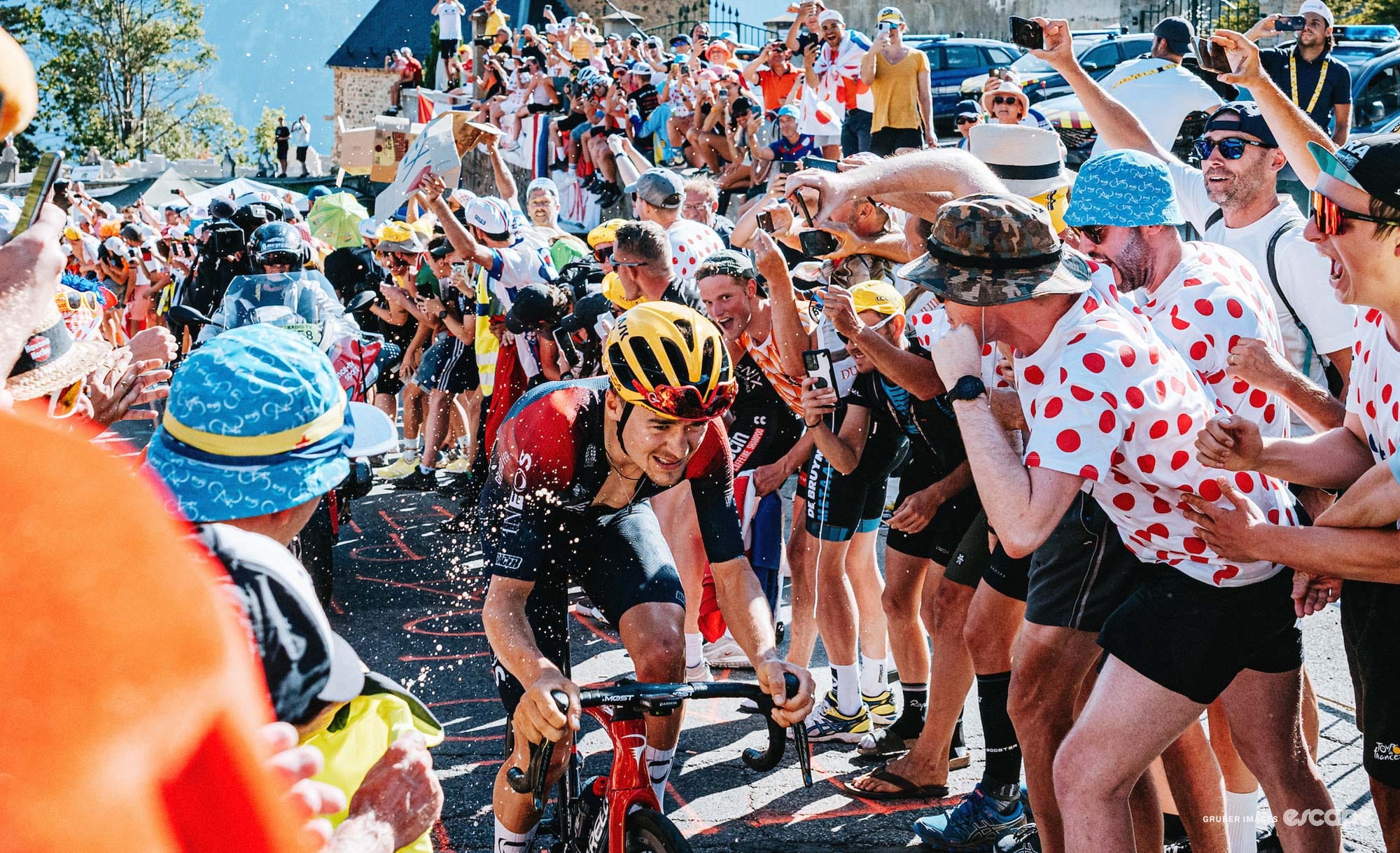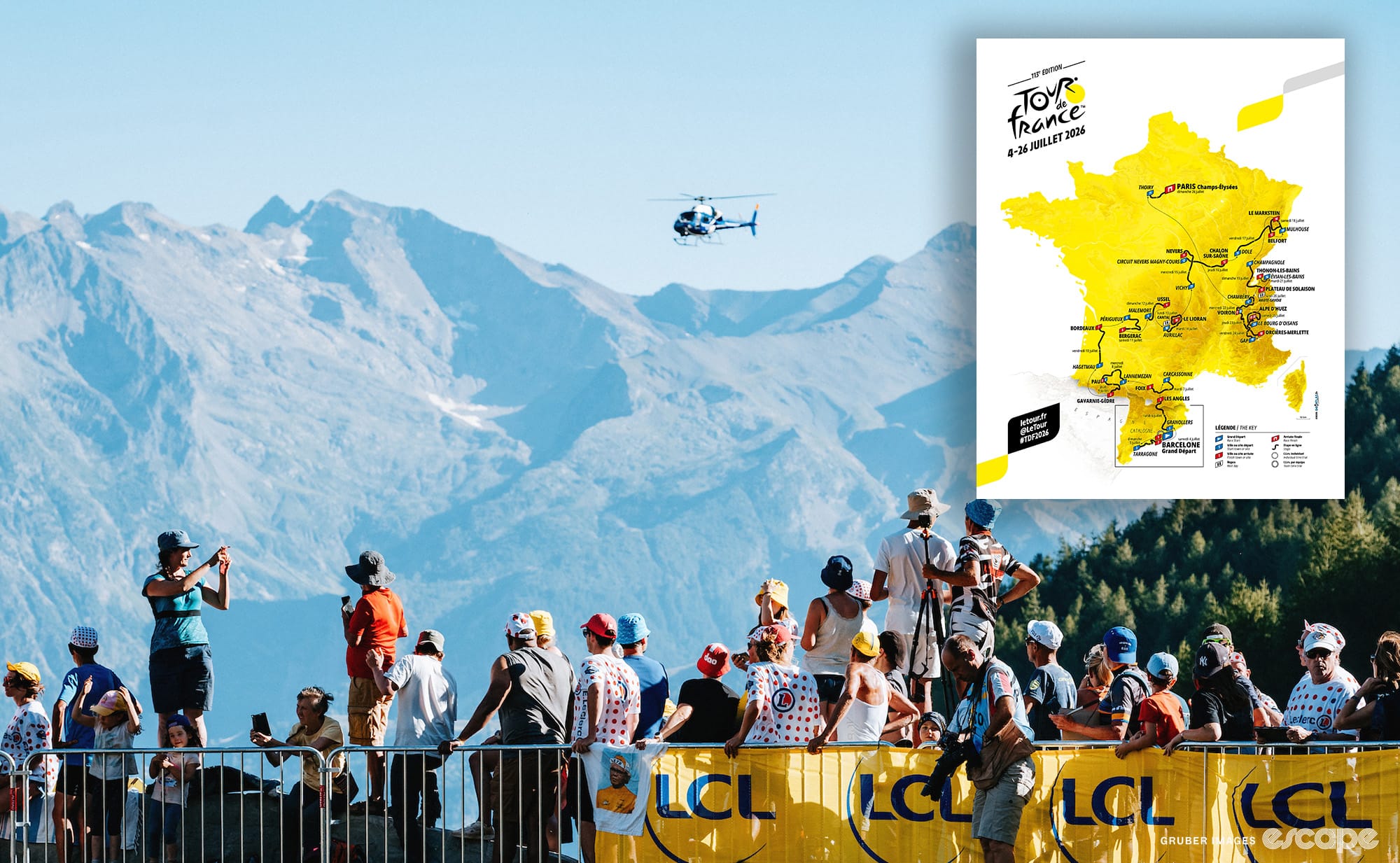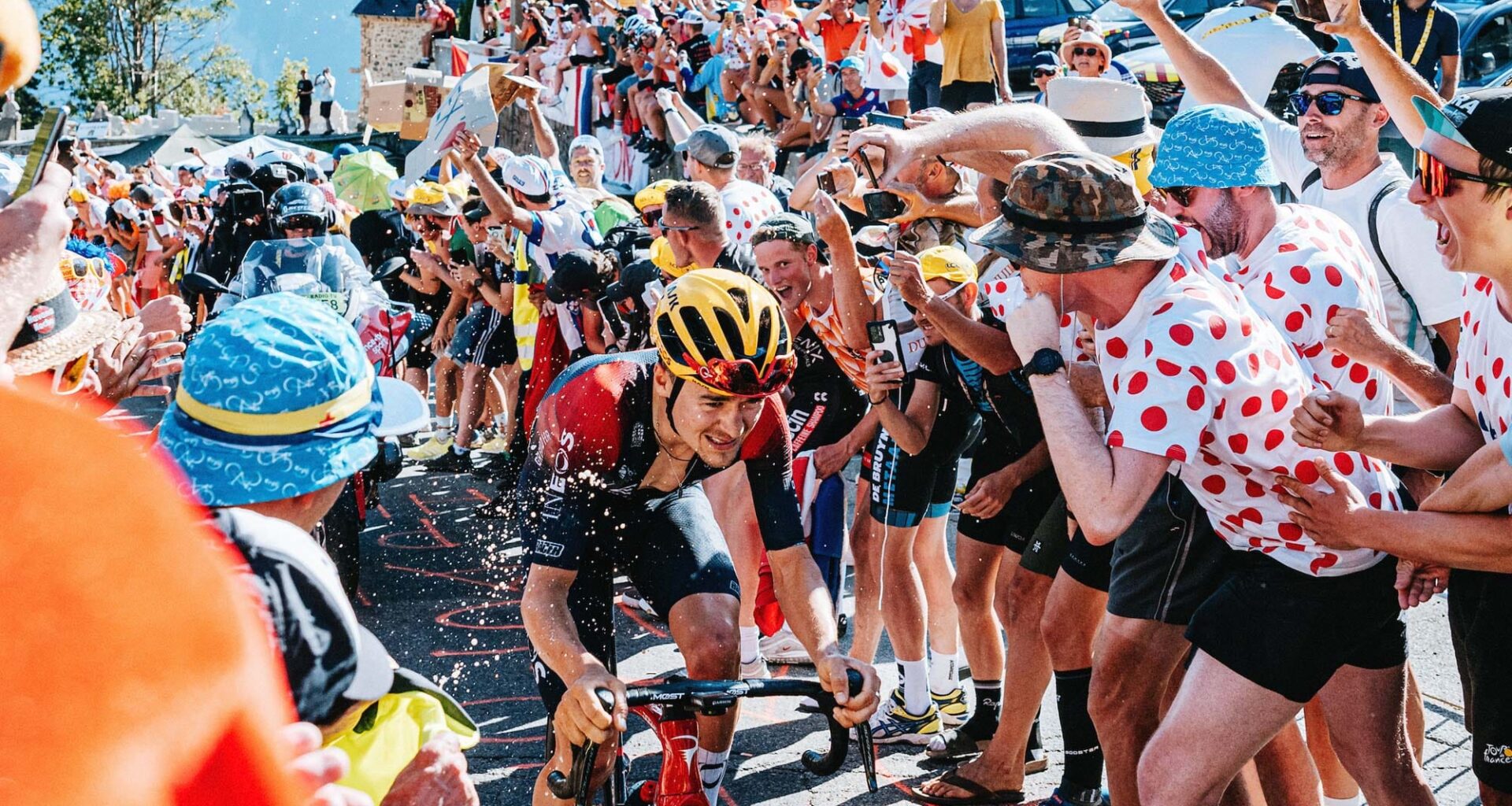
Your guide to when to go, where to watch, how to get around, what to bring, and how to make sure you actually have a good time at the 2026 Tour.

Gruber Images; Caley Fretz
Every cycling fan should see the Tour de France in person at least once. Is this your year?
This is your guide to doing it right in 2026. When to go, where to watch, how to move, what to bring, and how to make sure you actually enjoy yourself. The Tour route is officially out, and with hotels already booking up around the big stages, now’s the time to start planning.
With a double dollop of Alpe d’Huez, here’s the men’s 2026 Tour de France route
Two summit finishes on stages 19 and 20. Blimey.

My name is Caley Fretz, and I’m your concierge. I’ve covered 15 Tours as a journalist, ridden nearly every major climb, and have a deep love for France and the French. You can trust me on this: the Tour will thrill you, test you, confuse you, and charm you in equal measure.
Most of these tips and tricks apply to the Tour de France Femmes avec Zwift, except getting around will be a bit easier because of the slightly smaller crowds. Abby Mickey is working up a sister post to this one, but my early suggestion would be to get yourself to Mont Ventoux, it’s going to be epic.
Let’s get to it.
When to go: Pick your week
For 2026, the Tour begins in Barcelona. Yes, Spain. Expect heat, vermouth (maybe sangria), and the general chaos of a Grand Départ in a region that’s home to a huge swath of the pro peloton.
The first week winds quickly into the Pyrenees for a proper mountain start. Then the race swings north and east across Bordeaux, the Dordogne, Corrèze, and the Massif Central before a finale through the Jura and Alps, finishing back in Paris on the Montmartre laps that made such a good show last time.
So, three distinct weeks, three distinct flavors:
Week 1: Barcelona & the Pyrenees. Sun, surf, sangria. The opening weekend includes a team time trial around the city and an uphill finish at the Olympic Stadium, followed by a hilly Tarragona stage and a summit at Les Angles in the Pyrenees. You could spend the whole week between Catalonia and southern France and never stop eating well.Week 2: Wine country and quiet roads. The race winds north and east through Bordeaux, Dordogne, and Corrèze. Think rolling hills, vineyards, medieval towns, cassoulet. It’s slower, cheaper, and sometimes easier than the mountains, and you’ll have great food from hidden-away rural spots. Warning, though, that much of this week takes place in tiny towns that will absolutely be overrun by the Tour. Book early, both hotels and dinner reservations. Week 3: Jura/Alps. The big showdown. La Planche des Belles Filles, Orcières, doubel Alpe d’Huez before the Champs Élysées return. If you want to see the decisive moments, this is where to be. Race director Christian Prudhomme even said they made these final days extra hard to try to ensure the race wouldn’t be decided too early. The region is (in general) also more developed and thus (slightly) easier to find a good room. Except on the Alpe.
This post is for paying subscribers only
Subscribe now
Already have an account? Sign in
Did we do a good job with this story?
👍Yep
👎Nope

